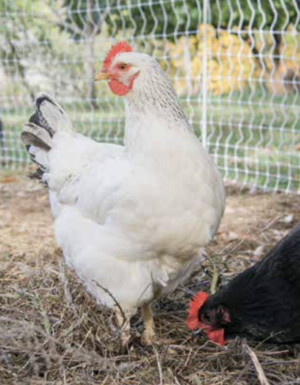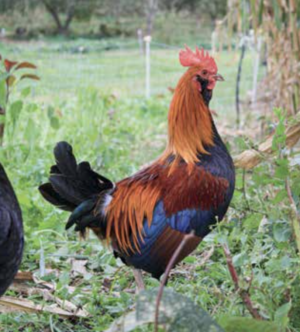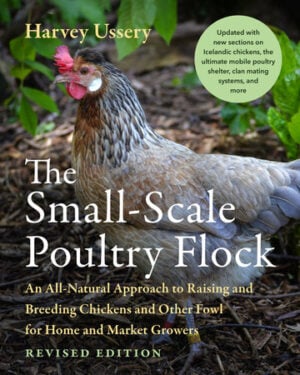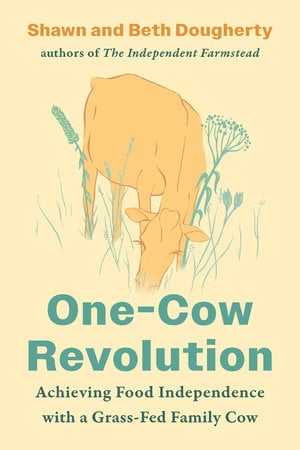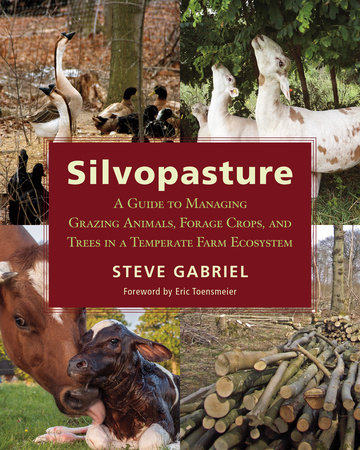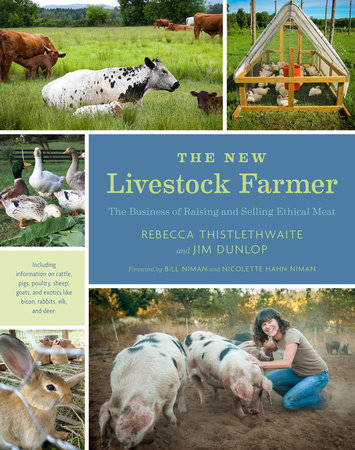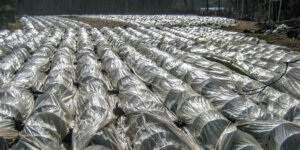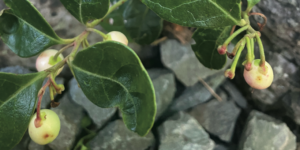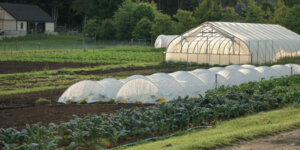How to Choose the Right Breed for Your Poultry Flock
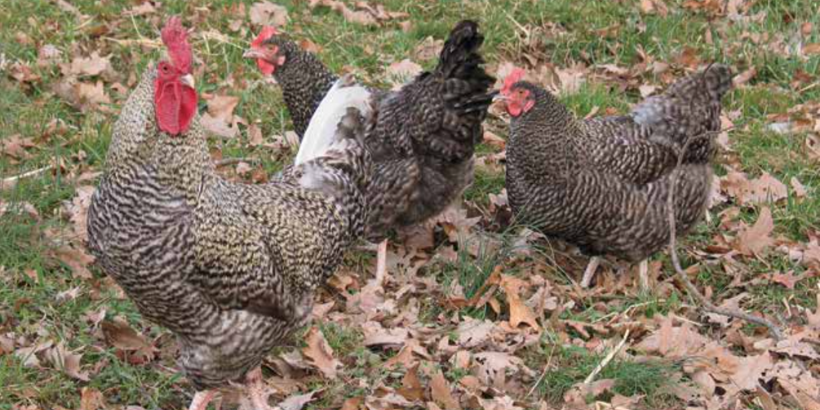
Confused by all the poultry breed options? There are many factors to consider when choosing a breed for your poultry flock — from climate to commitment level. We’re here to help make your decision easier! Read on and discover how to pick the perfect breed for your flock.
The following is an excerpt from The Small-Scale Poultry Flock, Revised Edition by Harvey Ussery. It has been adapted for the web.
Featured image copyright © 2022 by Harvey Ussery.
Poultry Flock Breeds: Laying
Most of the traditional breeds developed for high egg production are small, putting more resource into laying than growing large frames and muscle mass. They lay white eggs; come into lay early; tend to be flighty around people; and almost never go broody. Ancona, Hamburg, and Minorca are among the easier to find of the traditional laying breeds.
Leghorn: Queen of the Breed
The queen of this group is the Leghorn. Innumerable white strains of this breed have been developed for use in the egg industry, but traditional strains—active and hardy in addition to being prolific layers—are readily available.
Leghorns also come in many colors other than white—Light Brown Leghorns, both male and female, are among the most beautiful chickens that ever graced a homestead—and with either single or rose combs.
Choosing A Laying Breed
When selecting a layer breed, remember that the production figures you see are widely variable breed averages, suitable as a rough guide only. It is said that an Australorp hen holds the world laying record—364 eggs in 365 days! But the average flock of Australorps will not lay as many eggs as the average Leghorn flock— not by a long shot.
Poultry Flock Breeds: Meat
A few traditional breeds were developed primarily as table fowl: Jersey Giants (White and Black) in America; Cornish in England; and Brahma, Cochin, and Shamo in Asia. These days, though, such breeds have been supplanted by fast-growing hybrids, foremost among them the Cornish Cross, currently the foundation of the broiler industry, grown worldwide at an estimated sixty-six billion or more per year.
A fundamental question is whether meat chicken at your house will mean fast-growing broiler strains, grown in batches to fill the freezer, or the product of routine culling of a dual-purpose flock, discussed next.
Poultry Flock Breeds: Dual-Purpose
The most typical farm chickens in the past were breeds now called dual purpose. While such breeds do not lay as well as the egg-specialist breeds, nor grow as fast as meat hybrids, they serve as the best compromise of the two: reliable layers that grow fast enough to a generous size to make good table fowl. They tend to be more tranquil than the flightier egg-specialist breeds—a bit easier on the nerves.
Most breeds in this group lay brown eggs; in some, occasional hens may retain the broody trait and make good mothers. These breeds are likely to be your best bet for a small-scale flock, and there are many to choose from: Buckeye, Delaware, Dominique, New Hampshire, Plymouth Rock, Rhode Island Red, Wyandotte, and more from America; Chantecler from Canada; Faverolle, Houdan, Orpington, and Sussex from Europe; Australorp from Australia. Many of the traditional dual-purpose breeds are seriously in need of conservation breeding.
Choosing A Breed for Your Poultry Flock: Different Types
The following are some of the breeds we have worked with during close to four decades to make up our typical mixed flock of adult layers, young growing replacement birds that are continually culled as table fowl, and a working subflock of broody hens:
New Hampshire
Our first flock of chickens were New Hampshires, developed out of Rhode Island Reds by Andrew Christie in the 1920s. Christie bred for a superior meat bird, ensuring their hardiness by keeping his breeders in pasture shelters through his harsh New England winters. His success is attested by the fact that the New Hampshire was at one time the dominant broiler in the poultry industry, and that numerous broiler crosses were made with the New Hampshire as half of the mix.
We took care to locate the Newcomer strain, developed by Clarence Newcomer in the 1940s for better egg production. (I’m not sure it’s even possible to find the original Christie strain.) Our New Hampshires were vigorous and hardy, laid plenty of large brown eggs, and were fine table birds. Some of the hens went broody and proved to be excellent mothers.
Rhode Island Reds
Both males and females of this breed are a rich, lustrous red, darker than the New Hampshire. They are among the best layers of all brown-egg breeds and an excellent dual-purpose breed. This breed has a reputation for being more aggressive, especially the cocks. Both New Hampshire and Rhode Island Reds lay well in winter.
Barred Plymouth Rock
A quintessential rock-solid American farm breed, they have sharply defined parallel bars of dark gray and lighter color (not quite white). These are among the best of dual-purpose breeds.
Cuckoo Marans
The Marans—developed as a dual-purpose breed about a hundred years ago in the town of Marans, on the western coast of France—is known for extremely dark brown eggs. The Cuckoo color variant has much the same look as the Barred Plymouth Rock, though its barred pattern is not as sharply etched. We found them an excellent table fowl, though their winter egg production was poor. Some of our Marans hens were excellent mothers.
Welsummer
Another dark-egg breed is the Welsummer, bred in the village of Welsum in the Netherlands in the early years of the twentieth century. In our experience they were not as large nor as vigorous as the Marans. The color pattern is black-breasted red—the one most typically seen in “cock at dawn” illustrations and photographs.
Delaware
This was one of the crosses of the New Hampshire (with Barred Plymouth Rock) when it was a mainstay of the broiler industry. It is a handsome bird, mostly white, marked with black barring in the hackle and tail feathers. Though the Delaware was bred to be a meaty chicken and a good layer of large eggs, it is hard these days to find stock that lives up to its full potential.
Partridge Chantecler
This was bred in Canada in the early twentieth century as an exceptionally cold- hardy dual-purpose fowl (due in part to its minimalist comb and wattles, less subject to frostbite). Though not champion layers, we sometimes kept a few in the flock because they hold their egg production well in winter. Most of our Chantecler hens went broody and were competent mothers.
Light Brahma and Buff Cochin
Both these Asian breeds are large and make good table fowl, though they are slow to mature. Neither is a champion layer, though both tend to go broody and make excellent mothers. I prefer clean-legged chickens (both these breeds are fully feather-footed), but if you’re looking for a breed that is both beautiful and among the most docile of all chickens, either could be a fine choice for you.
Buff Orpington
A heavy general-purpose fowl, this is another extremely mellow breed for those seeking docile backyard companions. Though average in egg production (of larger-than-average eggs), they hold their production well in winter. Orpington hens incline toward broodiness more than those of most breeds and are excellent mothers.
Silver Spangled Hamburg
An ancient breed originating in Holland, this is one of only a couple of “egg specialist” breeds we have raised. Though too small to be considered a meat breed, they are visually striking and prolific layers (though the eggs are small). It is a breed that was in earlier times known as “thrifty,” both because they are economical eaters and because they forage well.
Dark Brown Leghorns and Light Brown Leghorns
For several years I kept a few individuals of these non-industrial Leghorns. If you are looking for handsome birds that will reliably keep egg production up, either would be a good choice.
Australorp
These are striking coal-black birds with bright red single combs that were developed out of Orpington in Australia in the early twentieth century. Though a bit small for a dual-purpose breed, this breed’s egg production is excellent. We have a friend whose Australorp hen successfully hatched a clutch of eggs she laid in a bucket of rusty nails!
Wyandottes
This is another quintessentially American dual-purpose farm breed, which originated in New York State in the 1870s. We’ve kept several of the color variations available, especially the Silver Laced. Consider Wyandottes if a docile breed with a rose comb (less subject to frostbite) and good winter egg production appeals to you.
Dorking
If you want a bit of history in your backyard, consider keeping Dorkings, brought to England by the Romans in Julius Caesar’s invasion, more than two thousand years ago. Dorkings are short-legged, and males have quite large single combs. (There are rose-combed varieties as well.)
They are scarcely champion layers—though friends of ours had a Dorking hen who at six years laid more eggs than anyone else in the flock. They were valued in England in earlier times as an excellent meat breed. Dorkings are among a few breeds distinguished by having five toes.
Old English Game (OEG)
If I knew that starting tomorrow I could purchase neither feeds nor chicks from outside sources and could choose only one breed of chicken for my flock, I would take the Old English Game. Like Dorkings, the OEG has a long lineage, going back a thousand years.
Though much used during that time as “game” chickens for cockfighting, they have as well been valued as a utilitarian farm breed. While hopelessly unproductive by modern standards for rate of growth and egg production, they can feed themselves if given enough ground on which to range.
Though small, they are surprisingly plump under their feathers, and rich in flavor—at one time in England they were considered the standard against which all other meat fowl were judged. The hens are among the best chicken mothers on the planet and for many years were the backbone of my working broody subflock. Despite their aggressiveness toward one another, I found the cocks friendly toward both my visitors and me. Old English Games have contributed their vigor, hardiness, and longevity to innumerable modern breeds.
Recommended Reads
Naturally Feeding Your Flock: Feed Poultry With Fresh Greens
Recent Articles
Want to grow year-round, but a greenhouse feels like a big investment? When it comes to cost and flexibility, low tunnels are the all-around winners.
Read MoreWintergreen is the stunning evergreen groundcover that’s a game-changer for your garden! It’s cherished for its aromatic leaves, vibrant fall color & bright berries.
Read MoreGrow winter carrots for a sweeter & more flavorful harvest! Ditch the bland, store-bought carrots this winter! Grow your own winter carrots for a sweeter and more flavorful twist 🥕🥕
Read MoreSearching for the perfect book to give the homesteader in your life? We’ve got your go-to books for anyone interested in organic growing, permaculture, soil health, year-round growing & more! What’s their next great read?
Read MoreWinter is coming… but that doesn’t mean you should put away those tools just yet. Extend the growing season well past the first frost!
Read More

